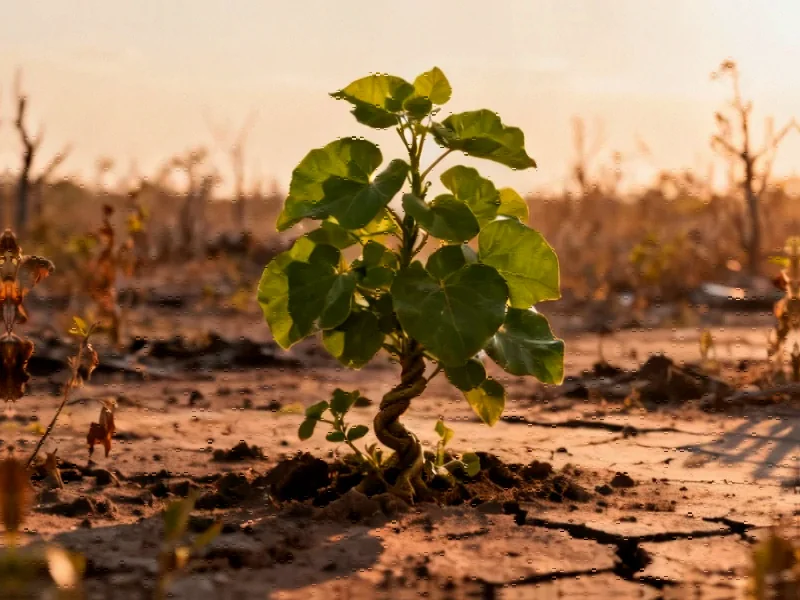Revolutionizing Biosecurity with Predictive Analytics
In an era of unprecedented global connectivity, plant species are traveling across continents at an accelerating pace. While many introduced plants coexist peacefully with native flora, others transform into ecological dominators—outcompeting local vegetation, disrupting food chains, and fundamentally altering ecosystems. These invasive species represent one of the most significant threats to global biodiversity, costing economies billions annually in control efforts and environmental damage.
Traditional approaches to managing this crisis have typically been reactive, identifying problematic species only after they’ve established firm footholds. However, an interdisciplinary team from the University of Connecticut has developed a groundbreaking AI framework that can predict invasion risks before plants ever reach new territories. Their methodology, published in the Journal of Applied Ecology, represents a paradigm shift in how we approach biosecurity and ecological conservation.
Cross-Disciplinary Innovation: From Galaxies to Gardens
The project emerged from an unexpected intersection of fields. Assistant Professor Julissa Rojas-Sandoval wondered whether machine learning techniques used in astrophysics to classify galaxies could be adapted for ecological applications. “Discussing this idea with Professors Daniel Anglés-Alcázar and Michael Willig,” Rojas-Sandoval explains, “we determined that it was possible and started working together to test the concept, adapting algorithms from astrophysical applications.”
This cross-pollination of expertise exemplifies how technological innovations from seemingly unrelated fields can drive progress in environmental science. The collaboration between geography, physics, and ecology specialists created a synergy that none could have achieved independently.
Data-Driven Predictions with 90% Accuracy
The researchers compiled three comprehensive datasets to train their machine learning algorithms. The first captured biological characteristics including reproduction strategies and growth forms. The second documented invasion histories, tracking where species had previously caused ecological problems. The third focused on habitat preferences for each species.
“What is exciting,” Rojas-Sandoval emphasizes, “is that we are not just providing a framework to classify plants as invasive and not, we are providing a way to identify which species have the potential to become invasive and problematic before they arrive in a new area.” The resulting models achieve over 90% accuracy in predicting invasion success, significantly outperforming traditional assessment methods.
Key Predictive Factors for Invasion Risk
The analysis revealed several critical indicators that strongly correlate with invasion potential. Previous invasion history emerged as the most significant predictor—plants that had proven problematic in multiple regions were highly likely to cause issues in new areas. Reproductive plasticity also proved crucial, with species capable of multiple reproduction methods (seeds, cuttings, etc.) having distinct advantages.
The number of generations within a single growing season also influenced establishment success, highlighting how biological adaptations can determine ecological impact. These findings provide actionable insights for regulators and conservationists seeking to prioritize prevention efforts.
Complementing Traditional Risk Assessments
The researchers stress that their AI framework is designed to enhance rather than replace existing biosecurity measures. Traditional risk assessments, which rely on expert questionnaires and evaluations, have been vital for preventing widespread introductions of invasive species. However, these methods can be subjective, time-intensive, and often applied after species have already been introduced.
“With these new machine learning tools,” says Rojas-Sandoval, “our data-driven models can help remove biases in the assessments and increase their predictive power.” This approach represents a significant advancement in scientific methodology for ecological forecasting.
Global Applications and Future Directions
The current research focused specifically on Caribbean islands, but the methodology is designed for broader application. The team used widely available data to ensure replicability in other regions and is inviting researchers worldwide to create similar datasets for their areas of interest.
“We want to analyze other regions and see if the models can still successfully predict the probability of invasion,” Rojas-Sandoval notes. “If not, then we need to train new machine learning models specific for each area. In either case, machine learning requires high quality and diverse biological and ecological data, which is why extensive fieldwork is so important.”
This research aligns with broader industry developments in predictive analytics and artificial intelligence applications across multiple sectors. As the team continues to refine their approach, they’re contributing to a growing body of work demonstrating how advanced computational methods can address complex environmental challenges.
A New Era in Ecological Protection
The UConn team’s work represents a significant step forward in proactive ecological management. By identifying potential invaders before they establish themselves, conservationists and regulators can implement preventative measures more effectively and efficiently. This approach could substantially reduce the ecological and economic costs associated with invasive species management.
As Rojas-Sandoval summarizes, “This is a new strategy to take advantage of the wonderful datasets and machine learning tools available to complement previous methods and become more effective at preventing new invasions.” The research demonstrates how AI-powered ecological forecasting is transforming our ability to protect biodiversity in an increasingly interconnected world.
This article aggregates information from publicly available sources. All trademarks and copyrights belong to their respective owners.
Note: Featured image is for illustrative purposes only and does not represent any specific product, service, or entity mentioned in this article.



